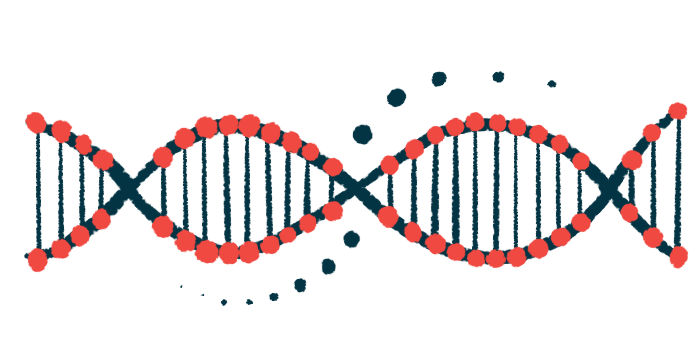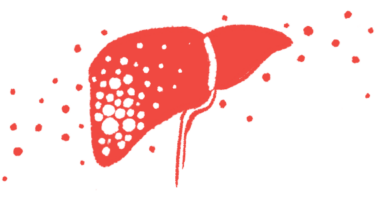Loss of FBP1 protein behind MASH progression to liver cancer: Study
US researcher compares damaged liver cells to 'ticking time bombs'

A molecular system controlled by a protein called FBP1 is responsible for how liver cells damaged by MASH — fully, metabolic dysfunction-associated steatohepatitis, a severe form of fatty liver disease — grow into cancer cells.
That’s according to the findings of a new study, led by researchers at the University of California San Diego School of Medicine, that shed light on the mechanisms underlying the progression of MASH — which is often associated with a diet high in fats and fast food — to liver cancer.
“Going from fatty liver disease to MASH to liver cancer is a very common scenario, and the consequences can be deadly,” Michael Karin, PhD, a UC San Diego professor and coauthor of the study, said in a university press release. “When you have MASH, you either end up destroying your liver and then you need a new liver, or you progress to frequently fatal liver cancer, but we still don’t understand what’s happening at the subcellular level during this process.”
Study coauthor Ludmil Alexandrov, PhD, noted that diet is tied to liver cell damage.
“Comprehensive genomic analyses of tumor DNA indicate that [these cells] originate from liver cells damaged by MASH, emphasizing a direct link between diet-induced DNA damage and the development of cancer,” said Alexandrov, an associate professor of cellular and molecular medicine and bioengineering at UC San Diego and member of university’s Moores Cancer Center.
The study, “FBP1 controls liver cancer evolution from senescent MASH hepatocytes,” was published in the journal Nature.
FBP1 protein key in cancer development, researchers find
Fatty liver disease is a disorder marked by the abnormal buildup of fat in the liver. In severe cases, this can progress to MASH, which is marked by liver inflammation and scarring.
It’s well-established that MASH increases the risk of developing hepatocellular carcinoma (HCC), the most common form of liver cancer. However, the precise biology by which MASH leads to HCC remains not fully understood.
It’s previously been shown that a diet with too much fat and sugar — the type of diet that can lead to the development of MASH — can cause damage to liver cells’ DNA and drive the cells into a state called senescence. During senescence, cells are alive and metabolically active, but they don’t actively divide to make new cells.
Senescence is a normal response to cellular stress. In theory, stopping dividing gives the cell time to recuperate and repair damage, which should ultimately reduce the risk of the cell acquiring mutations and growing out of control to cause a cancer.
This finding has posed a conundrum for researchers: If MASH induces senescence, and senescence typically protects against cancer development, then why does MASH so often lead to HCC?
The new study reveals that the answer may lie in FBP1, a protein known to help regulate the metabolic activity of liver cells and to suppress HCC.
The team found that FBP1’s activity helps to keep liver cells in senescence. Essentially, according to the researchers, FBP1 acts as the main braking system that stops a cell from dividing when it shouldn’t.
Most liver cancers arise directly from cells in senescence: Study
Through an in-depth battery of experiments, the researchers demonstrated that senescent liver cells can lose FBP1’s activity. When FBP1 is lost, another cell growth-suppressing protein called p53 is also lost, while the activity of AKT and NRF2 — two proteins that drive cell growth — is increased. This molecular dysregulation ultimately leads healthy senescent liver cells to grow into cancer cells.
“How senescence is established and eventually bypassed to license MASH to HCC progression was unclear,” the researchers wrote. “Here we show that metastable cross-regulatory interactions between tumor suppressive FBP1 and p53, which are upregulated in MASH and lost in HCC, and tumor promoting NRF2, which is activated in most HCCs but downregulated in MASH, resolve this conundrum.”
The team demonstrated that most liver cancers arise directly from senescent liver cells.
As such, according to Karin, the senescent cells are “like ticking time bombs that could start proliferating again at any point and ultimately become cancerous.”
A poor, fast-food diet can be as dangerous as cigarette smoking in the long run. … Bad diets … can fundamentally change how our cells function, right down to their DNA.
Based on this finding, the researchers proposed that treatments to reduce DNA damage, thereby stopping cells from going into senescence, could help to prevent MASH progression to cancer.
“There are a few possibilities for how this could be leveraged into a future treatment, but it will take more time and research to explore these ideas,” Karin said, adding that “one hypothesis is that a high-fat diet could lead to an imbalance in the raw materials our cells use to build and repair DNA, and that we could use drugs or nutri-chemicals to correct these imbalances.”
Karin said another approach is “developing new antioxidants, much more efficient and specific than the ones we have now. … Using those could help block or reverse the cellular stress that causes DNA damage in the first place.”
The findings also highlight the damaging effects a poor diet can have on cellular metabolism and health, according to the team.
“A poor, fast-food diet can be as dangerous as cigarette smoking in the long run,” Karin said. “People need to understand that bad diets do far more than just alter a person’s cosmetic appearance. They can fundamentally change how our cells function, right down to their DNA.”
The study was funded in part by grants from the National Institutes of Health.







